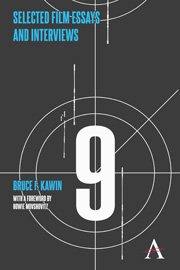Book contents
6 - Time and Stasis in La Jetée
from PART II - HORROR AND SCIENCE FICTION
Published online by Cambridge University Press: 05 May 2013
Summary
I had been teaching La Jetée for several years when Chick Callenbach asked me to put the gist of what I'd been saying in class into this article, which appeared in Film Quarterly in 1982. There is a fuller presentation of the problems of analyzing and intuiting the ineffable in my book The Mind of the Novel, which I was completing at the time I wrote this.
Chris Marker's La Jetée [(1963)] is identified as a “photo-roman, ” a photograph-[novel], a term that readily evokes its complex narrative strategies. The visual track consists primarily of still photos connected by straight cuts, fades, and dissolves; the editing rhythms and the variations in camera position are so like those in conventional “moving pictures” that the spectator may feel s/he is watching a movie rather than a comic book, and this impression of flow is reinforced by the soundtrack of the film, whose music, sound effects, dialogue, and voice-over commentary move along at a normal rate. Though the images seldom move, the film has duration and the impression of proceeding. The commentary—the “roman” element—is continuous and self-conscious; the nameless hero is “the man of whom one is telling the story.” There is more movement than fixity in La Jetée, but the overall impression it leaves, the first thing anyone says about it, is that it consists primarily of stills.
- Type
- Chapter
- Information
- Selected Film Essays and Interviews , pp. 50 - 56Publisher: Anthem PressPrint publication year: 2013



